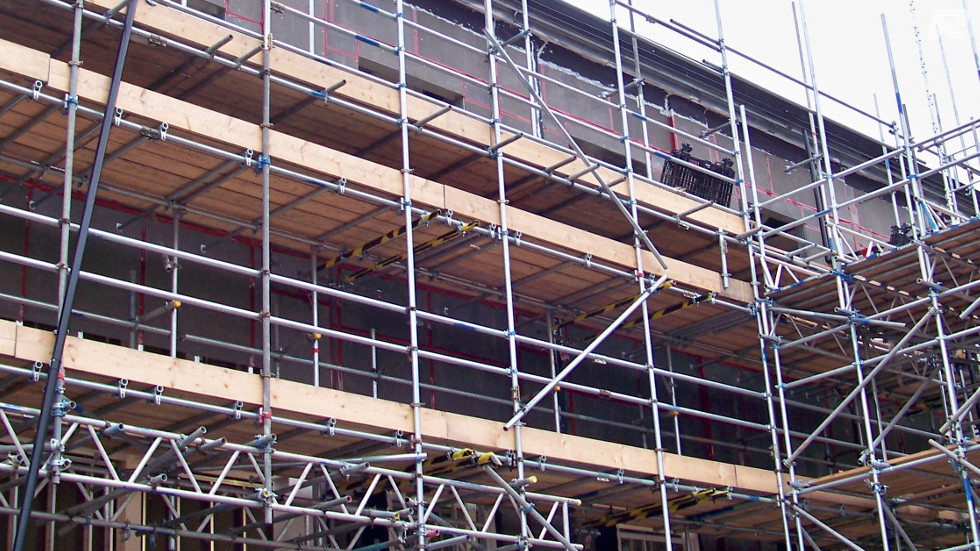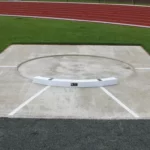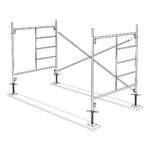A scaffolder in the UK builds and dismantles scaffolding structures. They ensure safety and access for construction projects.
Scaffolders play a crucial role in the construction industry. Their expertise allows workers to reach heights safely. Scaffolding is vital for many building projects. It provides the necessary support for workers and materials. Scaffolders must follow strict safety guidelines. They work in various weather conditions, ensuring structures are secure.
This job demands physical strength and attention to detail. Scaffolders must be skilled in assembling and taking down scaffolding efficiently. Their work helps keep construction sites safe and operational. Understanding what scaffolders do gives insight into the construction process and the importance of their role in the UK.
Role Of A Scaffolder
A scaffolder in the UK is crucial for construction and maintenance work. They build and dismantle the temporary structures used by workers. These structures, called scaffolds, provide support and access to high areas.
Scaffolders ensure the safety and stability of these structures. They follow strict guidelines and use specialized equipment. Their role is vital for completing projects on time and safely.
Daily Responsibilities
Scaffolders start their day by reviewing blueprints and instructions. They decide on the type and amount of materials needed. Next, they transport these materials to the site. They then assemble the scaffold, ensuring every piece fits securely.
Once the scaffold is up, they inspect it for safety. They check for any weaknesses or potential hazards. Throughout the day, they monitor the scaffold’s condition. If any issues arise, they make necessary adjustments. At the end of the project, they safely dismantle the scaffold.
Types Of Scaffolding
There are several types of scaffolding used in the UK. The most common type is supported scaffolding. It has a framework of poles and planks. This type is versatile and used for most construction projects.
Another type is suspended scaffolding. It hangs from the top of a building. This type is often used for window cleaning and repairs on tall buildings.
Mobile scaffolding is also popular. It has wheels, making it easy to move around. This type is useful for tasks that require frequent repositioning.
Each type of scaffolding has its own set of rules and equipment. Scaffolders must know how to work with each type safely and efficiently.
Skills Required
Being a scaffolder in the UK requires a unique set of skills. The job involves building, maintaining, and repairing scaffolding structures. These structures are essential for construction projects. Scaffolders need both technical skills and physical strength. Let’s explore the essential skills required for this role.
Technical Skills
Scaffolders must understand blueprint and plan reading. They need to follow detailed instructions. Accurate measurements are crucial. A scaffolder must know how to use various tools. These tools include hammers, levels, and wrenches. Scaffolders often work at great heights. Knowing safety procedures is vital. They must secure the structure properly. Training in scaffold construction is necessary. An NVQ Level 2 in scaffolding is beneficial.
Physical Requirements
The job is physically demanding. Scaffolders need strong muscles. They lift heavy materials daily. Good balance is essential. Scaffolders often work on narrow platforms. They must be agile and move quickly. Endurance is important. The workday can be long and tiring. Good hand-eye coordination is necessary. Scaffolders need to handle tools and materials precisely. Physical fitness helps in performing tasks safely.
Training And Certification
Becoming a scaffolder in the UK requires specific training and certification. This ensures that scaffolders can work safely and effectively. Below we will outline the necessary courses and accreditation bodies involved in this process.
Necessary Courses
Aspiring scaffolders must complete several courses to gain the required skills. These courses cover various aspects of scaffolding work, including safety, assembly, and inspection.
| Course | Description |
|---|---|
| Construction Industry Scaffolders Record Scheme (CISRS) | This is the main certification for scaffolders. It involves multiple levels of training. |
| Health and Safety in Construction | This course teaches basic health and safety principles. It is essential for all construction workers. |
| Scaffolding Supervisor Course | For those looking to advance, this course covers management and supervision of scaffolding projects. |
Accreditation Bodies
Several accreditation bodies oversee the certification of scaffolders. These bodies ensure that training meets industry standards.
- Construction Industry Scaffolders Record Scheme (CISRS): This is the primary body responsible for scaffolder certification.
- Construction Skills Certification Scheme (CSCS): Provides proof that individuals working on construction sites have the necessary training and qualifications.
- National Access and Scaffolding Confederation (NASC): Sets industry standards and provides guidance on best practices.
Completing the required courses and gaining accreditation from these bodies is crucial. It ensures scaffolders are skilled and compliant with industry standards.

Credit: www.alamy.com
Safety Protocols
Working as a scaffolder in the UK demands strict adherence to safety protocols. These measures ensure the well-being of the workers and those around them. This section covers some essential safety protocols scaffolders must follow.
Protective Gear
Protective gear is vital for scaffolders. It includes helmets, gloves, and safety boots. Helmets protect the head from falling objects. Gloves provide grip and prevent injuries. Safety boots guard the feet against heavy materials. High-visibility vests are also important. They make workers visible to others on the site.
Risk Management
Risk management involves identifying and minimizing hazards. Scaffolders perform regular inspections of the scaffolding. This ensures it is stable and secure. They also check for loose bolts and damaged parts. Workers must follow safe work practices. This includes using harnesses when working at height. Clear communication is crucial. It helps prevent accidents and ensures everyone’s safety.
Tools And Equipment
Scaffolders in the UK rely on specific tools and equipment to complete their tasks safely and efficiently. These tools are essential for building, maintaining, and dismantling scaffolding structures. Understanding these tools is crucial for anyone interested in the scaffolding profession.
Common Tools
Scaffolders use a variety of common tools. These include hammers, levels, and measuring tapes. Hammers are essential for securing fittings and connections. Levels ensure that the scaffold is built straight and stable. Measuring tapes help in precise placement of scaffold components. Wrenches and spanners are also vital. They are used to tighten and loosen bolts and nuts. Another critical tool is the scaffold wrench. This specialized tool is designed to work with scaffold fittings.
Maintenance Tips
Regular maintenance of tools is important for safety and efficiency. Clean tools after each use to prevent rust and wear. Store tools in a dry, safe place to avoid damage. Inspect tools regularly for signs of wear or damage. Replace any worn or damaged tools immediately. Sharpen cutting tools to maintain their effectiveness. Lubricate moving parts to ensure smooth operation. Proper maintenance extends the life of tools and keeps scaffolders safe.

Credit: www.alamy.com
Career Path
Becoming a scaffolder in the UK offers a rewarding career path. This job requires skill, precision, and dedication. Scaffolders play a crucial role in construction. They ensure safety and efficiency on-site. The career path of a scaffolder can be both challenging and fulfilling.
Entry-level Positions
Most scaffolders start in entry-level positions. These roles usually require no prior experience. Newcomers often begin as scaffold laborers. They assist with basic tasks. This includes carrying materials and setting up scaffolding. Training is provided on-the-job. This helps workers learn essential skills.
Apprenticeships are also a common entry point. These programs combine work and study. Apprentices learn from experienced scaffolders. They gain hands-on experience while earning a wage. This path provides a solid foundation for a scaffolding career.
Advancement Opportunities
With experience, scaffolders can advance to higher positions. A common step is becoming a scaffolder. This role involves more responsibility. Scaffolders plan and erect scaffolding structures. They ensure the safety and stability of the scaffolds.
Further advancement can lead to supervisory roles. A scaffolding supervisor oversees teams of scaffolders. They manage projects and ensure compliance with safety standards. This position requires strong leadership and communication skills.
Some scaffolders move into inspection or training roles. Inspectors assess the safety of scaffolding. Trainers educate new scaffolders. These roles require extensive knowledge and experience. They play a key role in maintaining industry standards.
Challenges Faced
Scaffolders in the UK encounter several challenges in their daily work. These challenges test their skills, endurance, and dedication. Two of the most significant challenges they face are weather conditions and physical demands.
Weather Conditions
Working outdoors means scaffolders deal with changing weather. Rain, wind, and snow can make the job risky. Wet surfaces become slippery, increasing the chances of falls. Strong winds can make it hard to balance on high structures. In winter, icy conditions add another layer of danger.
Extreme temperatures also pose problems. In summer, heat can lead to dehydration and heatstroke. Scaffolders must wear protective gear, which can be uncomfortable in hot weather. In winter, cold temperatures can lead to numbness and reduced dexterity. This makes handling tools and materials more difficult.
| Weather Condition | Challenge |
|---|---|
| Rain | Slippery surfaces, increased risk of falls |
| Wind | Balancing difficulties, risk of being blown off |
| Snow | Icy surfaces, visibility issues |
| Heat | Dehydration, heatstroke |
| Cold | Numbness, reduced dexterity |
Physical Demands
Scaffolding is physically demanding. Scaffolders lift and carry heavy materials daily. This includes steel tubes, wooden planks, and tools. They must climb up and down structures, which requires strength and endurance.
Repetitive movements can lead to strain injuries. Bending, lifting, and stretching all day can cause muscle fatigue. Scaffolders also work at great heights, which requires a strong sense of balance. Fear of heights can be a barrier for some.
- Lifting and carrying heavy materials
- Climbing structures repeatedly
- Repetitive movements causing strain
- Working at great heights
The physical demands of the job require scaffolders to be in good health. Regular exercise and proper training help them maintain the necessary fitness levels.

Credit: www.rilmac.co.uk
Future Of Scaffolding
The future of scaffolding in the UK is bright and evolving. The industry is embracing new technologies and trends that promise better safety and efficiency. Let’s explore the key developments shaping this sector.
Technological Innovations
Scaffolding technology is advancing rapidly. Drones now inspect scaffolding structures, reducing risks for workers. 3D printing creates precise scaffolding components quickly and accurately. Virtual reality (VR) training programs help scaffolders learn safely and effectively. These innovations enhance safety and productivity in scaffolding projects.
Industry Trends
The scaffolding industry is seeing several trends. There is a growing focus on sustainable practices. Many companies are using eco-friendly materials. Modular scaffolding systems are becoming popular. They are easier to assemble and dismantle. This reduces project times and costs. Another trend is the increased use of digital tools. Project management software helps in planning and monitoring scaffolding projects. This ensures timely completion and quality control.
Frequently Asked Questions
What Does A Scaffolder Do?
A scaffolder erects and dismantles scaffolding structures. These structures support construction work on buildings and other projects.
What Qualifications Do Scaffolders Need?
Scaffolders typically need a CISRS card. They also require training courses like the COTS (CISRS Operative Training Scheme).
How Much Do Scaffolders Earn In The Uk?
Scaffolders in the UK earn between £25,000 to £40,000 annually. The pay depends on experience and location.
Are Scaffolders In Demand In The Uk?
Yes, scaffolders are in high demand due to ongoing construction projects. The industry needs skilled workers.
Conclusion
Scaffolders play a vital role in the UK construction industry. They ensure safety by setting up and dismantling scaffolds. Their work supports various construction tasks. With proper training, scaffolders build strong, secure structures. This job requires physical strength and attention to detail.
Interested in a scaffolding career? Seek training and certifications. Scaffolders enjoy job stability and good pay. They contribute significantly to safe, efficient construction projects.







